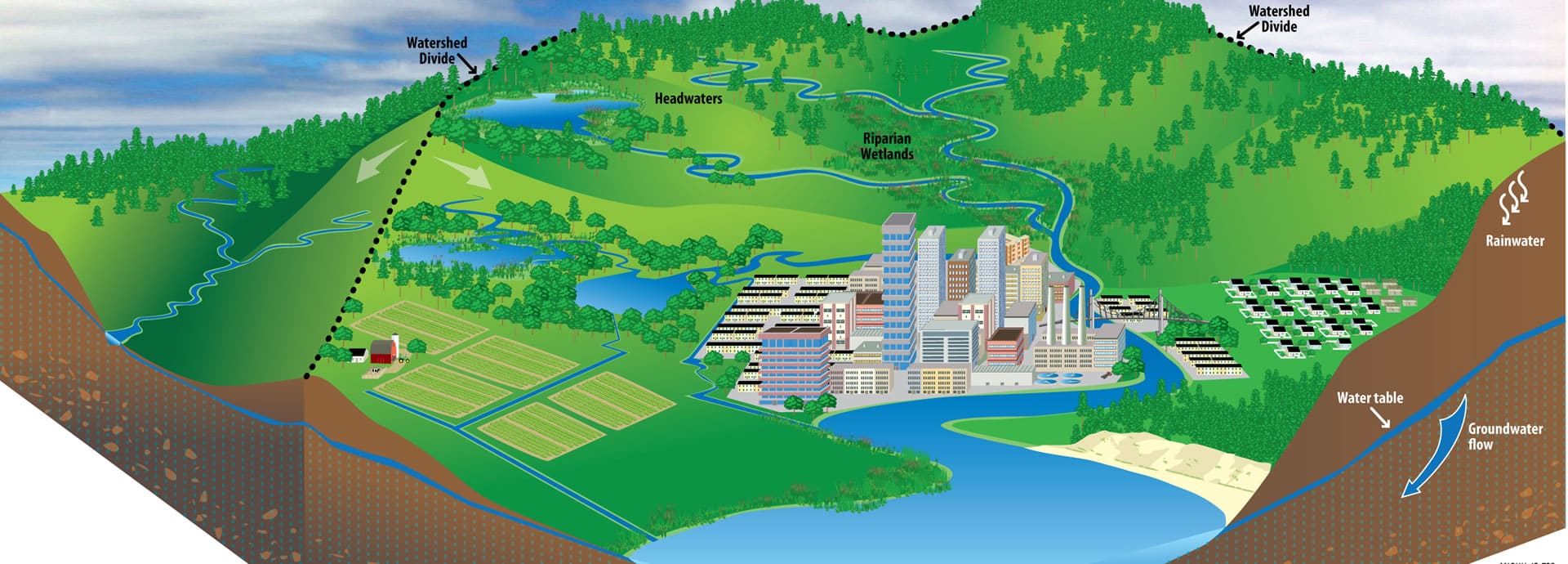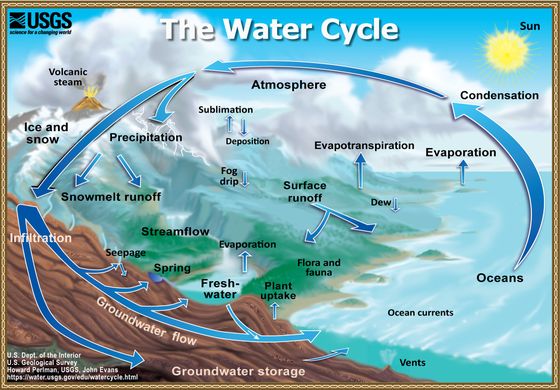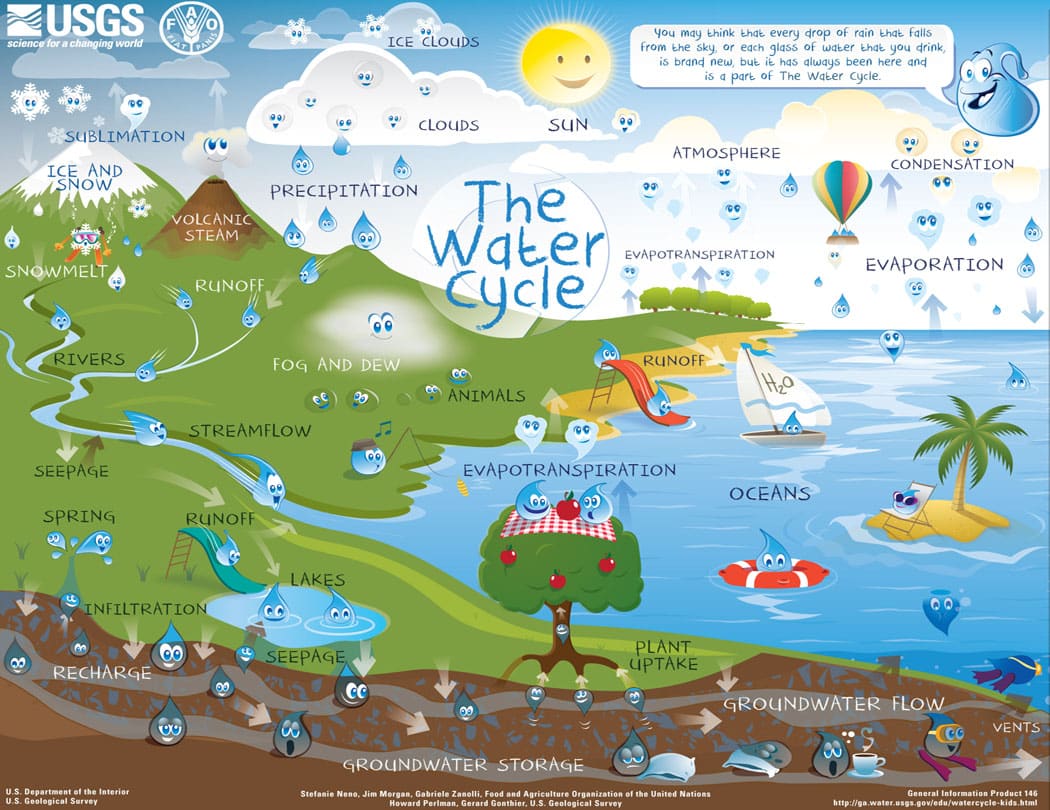uncover
Where does your water come from?

Watersheds
As you know from the previous section, a watershed is the area of land from which water drains into one reservoir — a river, stream, or lake. The smallest watersheds are the drainage areas for small streams and lakes. The smallest watersheds are usually nested in larger watersheds (think about a small creek flowing into a larger river). So in fact, most places are located in several watersheds!
Think about your closest waterway. Where does the water in that waterway come from? What type of landscape(s) does it flow through? Where does the water go? All of the area covered is a watershed.
Source: MN Pollution Control Agency
Where is the water in the watershed?
Within all watersheds, there are many systems at work. Some are obvious - surface water systems and terrestrial (land) ecosystems we see every day. But there are other less obvious systems that affect watersheds, like groundwater systems and systems that lie somewhere between water and land. In the Hackensack River Watershed, all of these systems work together, and when one is out of balance, all of them are affected.

Watersheds are the water cycle in action!
Earth's water is always in movement, and the natural water cycle, also known as the hydrologic cycle, describes the continuous movement of water on, above, and below the surface of the Earth. Water is always changing states between solid, liquid, and gas, with these processes happening in the blink of an eye and over millions of years.
As a CYCLE, there isn't a beginning or end, but rather there are a series of processes that occur to circulate water through our planet's systems. To really become a hero for water and watersheds, it helps to understand the big picture of how water moves through our world. All the water that flows into and out of your household, from your drinking water, to your shower, to your sewage waste is a part of this cycle.
As we uncover more about your watershed, it is important to remember some of the key elements of the water cycle that affect the systems within the watershed. Can you define these terms?
- Runoff
- Infiltration
- Seepage
- Plant Uptake
- Stream Flow
- Groundwater
If you need reminding, visit the interactive water cycle page by clicking the illustration in this section to visit the US Geological Survey page.
Why are watersheds important?
Imagine watersheds like bathtubs. Any drop of water that falls within the bounds of that bathtub reaches the drain. But not just water gets washed into the tub - anything that ends up in the tub also washes down with the water. The same is true with watersheds. Anything that falls on the ground in a watershed has the potential to run off into the body of water - stream, river, or lake - that drains that particular watershed.
Knowing what land area drains into what body of water, and knowing what is happening on that land, helps us understand what types of substances might be washing into the water. For example, what runs off an agricultural landscape is different than what runs off an urban landscape. So being aware of your land uses will helps you understand the issues that may be facing your watershed.

Human Impacts on Watersheds
As rivers flow from their freshwater sources to the sea, they are affected by human activity. Human activity ranges from extraction (drawing water from the river for use), changes in land use, contamination by chemicals and metals from land and water-based activities, and on-water activities such as fishing, shipping, building, and more. More than any other factor, human activities on and around water impact the health of our water and watersheds.

